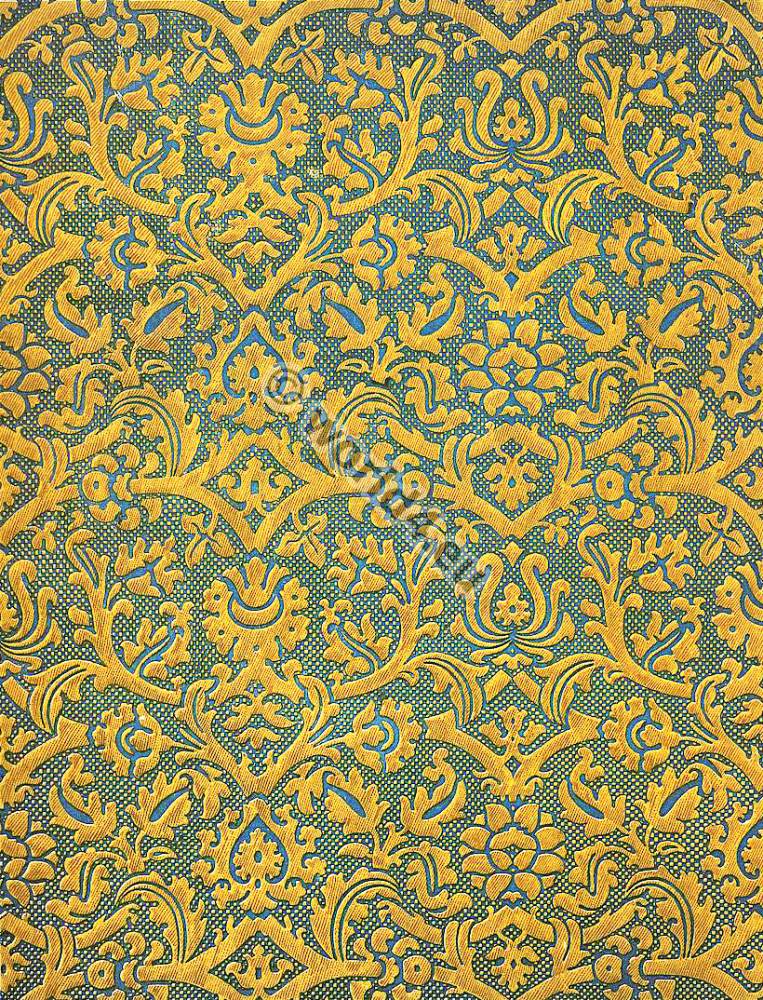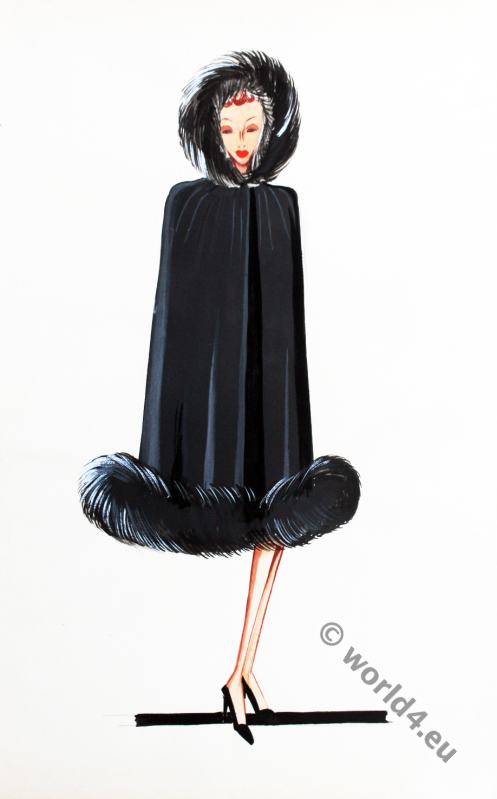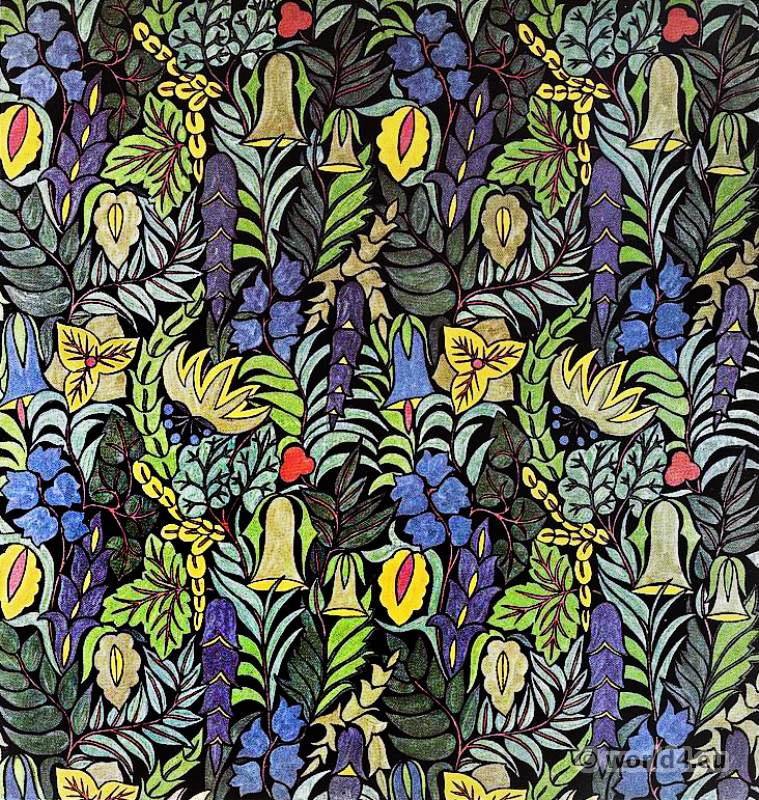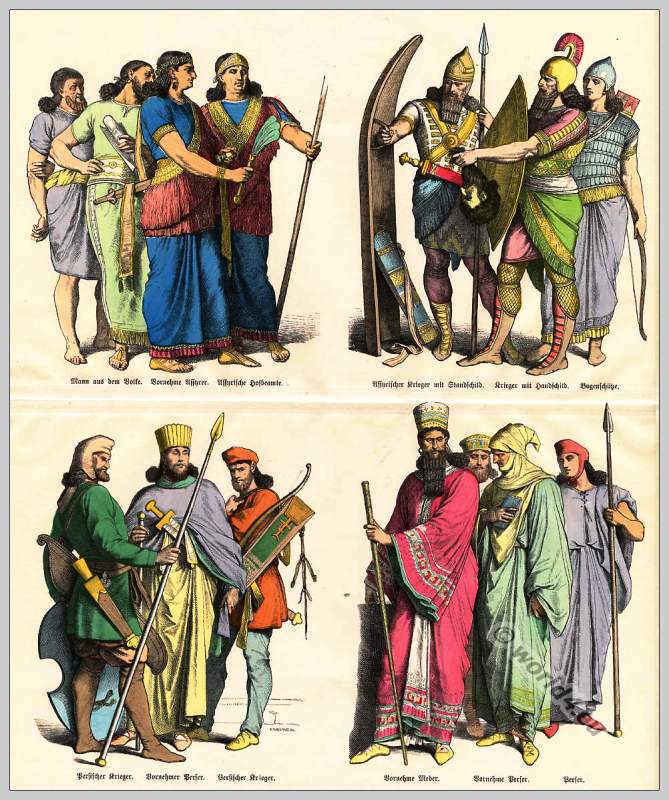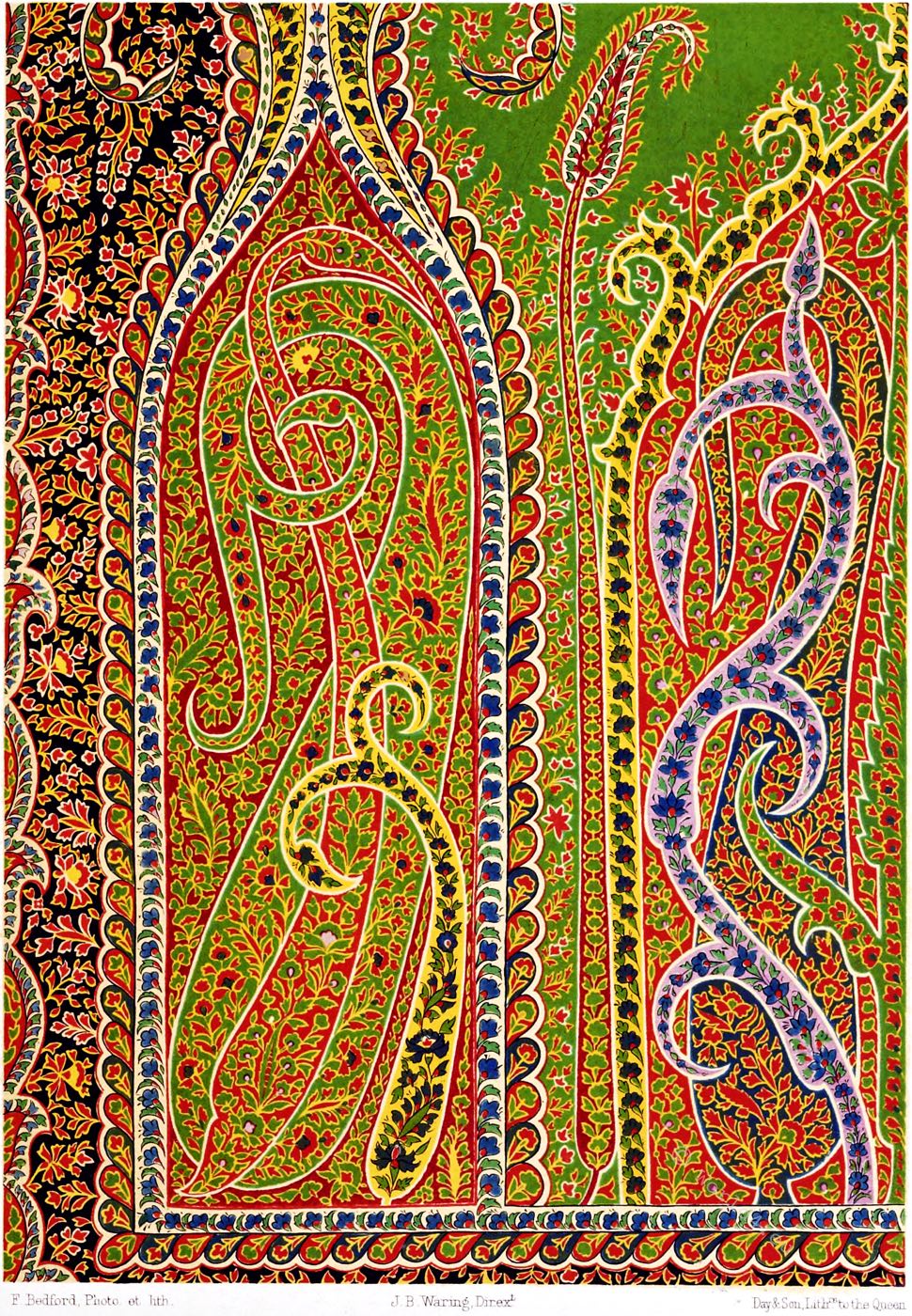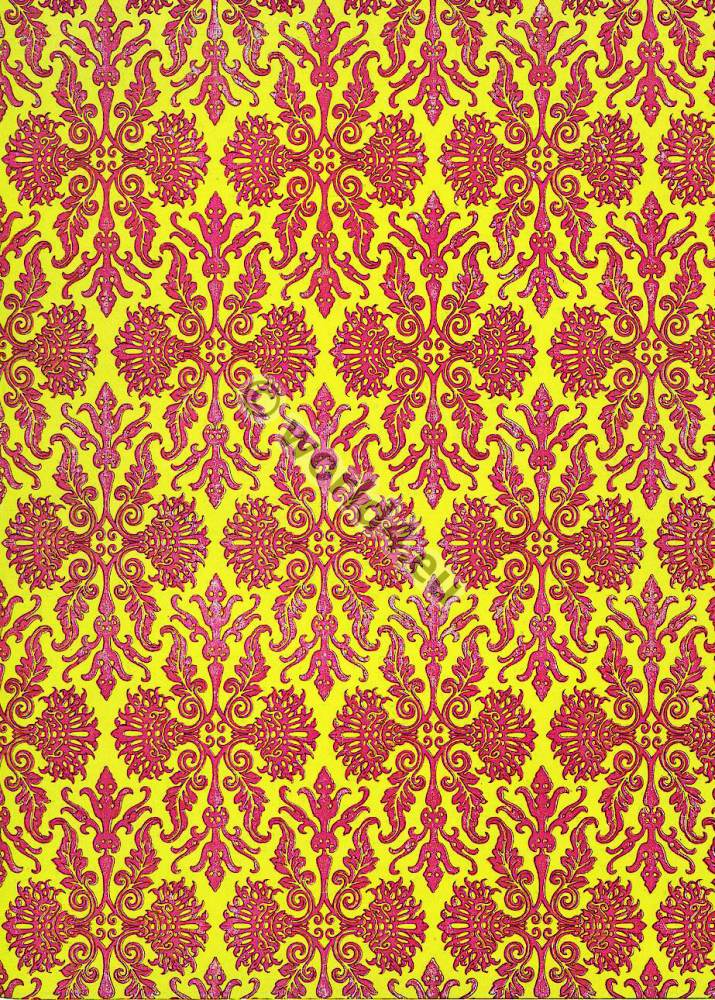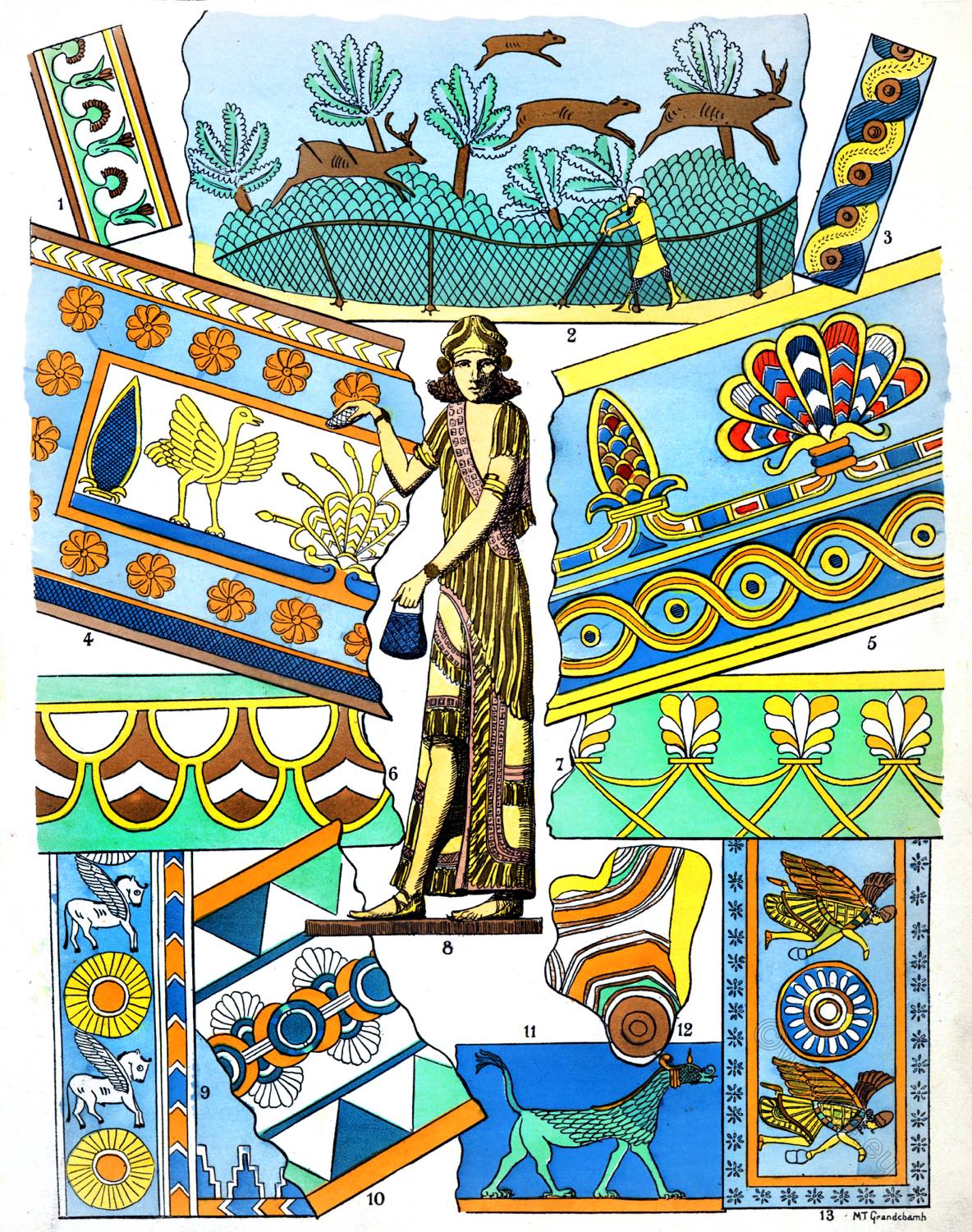
The Luxurious Assyrian Costumes.
Materials.
Part V. Assyrian Plate 8.
Figs. 1. 3. Small ornamental motif forming galloon, brown and green; 3 is yellow and blue with black central dots.
Fig. 2. Picturesque fragment of Assyrian hunt. Decoration often found in embroideries or paintings on royal garments.
Fig. 4. Pretty decorative motif for a gown-edge. The ground is pale blue, the motif a bird, etc., yellow and orange ornament.
Fig. 5. Another embroidered gown-band (from mura), painting in Nimrud’s palace, blue ground yellow, red, sanguine, brown and white motif.
Fig. 6. Embroidered motif for galleon on green; the outline of the motif is yellow, the inside white. White chevron. Ground of decoration brown.
Fig. 7. Small decorative galloon formed out of small white and buff palms on green support.
Fig. 8. Central figure. A very beautiful Assyrian costume in all its richness. Document from a basrelief in the palace of King Sargon (Sargon of Akkad was king of Akkad from 2356 to 2300 BC and from 2292 to 2236 BC.) at Khorsabad (Dur Šarrukin). The interesting cloak is all fringed with gold in front, disclosing a little gold-fringed skirt with the same ornamental motif. The upper part of the costumes is formed by winding fringes fastened with a galloon passing across the chest, partly covering the gown and hanging down the back like a scarf.
Fig. 9. Embroidered motif with beginning of a little edging in which we again find the winged bull so often met with in Assyrian decorations. Blue ground, yellow and red motif, white bull.
Fig. 10. Embroidered gown-bottom, orange and green motif on white.
Fig. 11. Fragment of white stuff with orange-brown and green motif.
Fig. 12. Embroidered gown-bottom; very rich and decorative; this animal is quite typically Assyrian. (From Babylonian document.)
Fig. 13. Ornamental motif with human figures and an orange and yellow rosace on white.
Stuffs.
STUFFS. – Assyrian stuffs, especially those of the ladies of the Court, and of the Kings, are very beautiful, and generally highly ornamented. It is to be observed that very incongruous kinds of ornamentation are found in these stuffs, sometimes recalling the designs of their enamelled bricks, their frescoes, or their potteries. Human figures or legendary creatures like the unicorn, according as the origin of the stuff was Babylon or Nineveh, are on a blue ground tending towards indigo if from Babylon, and appear as winged bulls on an olive-green ground, varied with golden yellow, if from Nineveh.
INDUSTRIES. – The Phoenician capitals were tremendous exchange centres. Caravans continually brought foodstuffs, textiles, costumes, and above all many kinds of feminine articles of Asiatics origin, and their vessels distributed all these goods of the old-time merchants throughout Europe.
MANUFACTURE. – They also received raw materials and made out of them articles of luxury, or indispensable household utensils. The Phoenicians, unlike the Dutch, were not simply sea-carriers. They had national industries which brought them splendid profits.
PURPLE. – They had been led to make important discoveries, among them that. of the purple dye, and one of their reds which is still called, when speaking of certain geraniums, “Phoenician red”, and the making of glass.
DYES & CLOTHS. – It must not be thought that the word purple indicates a uniform red tint, it was a particular kind of dye, of animal origin, and especially obtainable from certain kinds of shellfish. This purple differed from other dyes, which were of vegetable origin. There were six or seven kinds of purple, red, black, white, violet, amaranth. The Tyrian purple, which was the most famous, caused the air of the city of Tyre to be so redolent through the multiplicity of workshops devoted to it, that a stay in that manufacturing city of remote antiquity was rendered quite unpleasant. The riches of Tyre came from its dyes and its cloths and from the making of garments which the Phoenician merchants and pedlars spread everywhere.
WOOLLENS. – The Phoenician women dyed wool for the most part. Their products, already famous in the time of Homer, had considerably developed the business in wool, which Asia had despised, for various reasons, the chief one being that the Asia- tics had no pasturage, but on the other hand had abundance of mulberry trees and silkworms, while their warm and dry climate gave no cause for wearing wool, whereas the countries with sudden changes of temperature such as those of Europe, called for wool and for furs. AU their cloths are skilfully worked, but with little inspiration; they are workers, copyists, never creators. They servilely reproduce what they see, therefore intellectual life is closed to them. They have no literature, but they encouraged works of utility. Thus we find among them manuals of dyeing, of glassmaking, of weaving, besides which there are only the annals of their sovereigns.
DYES. – The Phoenicians had certain textile and colouring processes which we have not been able to rediscover. One of our scientific men who has studied the country most closely is M. Movers, who divides its history into four periods. The first goes to the 16th century B. C., when the nomad Phoenicians became merchants; their capital was Byblos. From the 16th to the 11th centuries B. C. their history centres about Sidon, and they were the buffer state between Assyria and Egypt. The third period extends from the 11th. century B. C. up to the year 886 of our era. The capital was Tyre, and there the Phoenicians became energetic colonisers. Finally the period from 886 A. D. marks their decadence when the Portuguese replaced them, although their colonies prospered. Their only known writer is Sanchuniathon.
SANCHUNIATHON – (ancient Greek Σαγχουνιάθων Sanchuniáthōn, Phoenician sknytn “Sakon has given”) was a Phoenician on whom the historian Philon of Byblos based his Phoenician History. Philon is said to have translated the original Phoenician text of Sanchuniathon into Greek and thus used it in the Phoenician History.
The information about Sanchuniathon’s life is partly of legendary nature, so that a possibly historical core is difficult to identify. Sanchuniathon is said to have lived in Berytos, Tyros or Sidon. He is said to have lived before the Trojan War and to have received his knowledge from Hierombalos, a priest of the god Jeuo (ancient Greek Ἰευώ). This knowledge he had supplemented with records from the sanctuaries, written down and dedicated to an otherwise unknown king Abibalos of Berytos
CORSAIRS. – The Phoenicians in reality combined lucratively commerce and piracy. Thus they solds jewels and brilliant trinkets to the Greeks, but a the same time seized their young girls and sold them in Asia in the slave markets, or exchanged them against other product, silk for instance, which they then sold elsewhere. These facts are recounted in Homer’s Odyssey.
Continuing
Discover more from World4 Costume Culture History
Subscribe to get the latest posts sent to your email.

